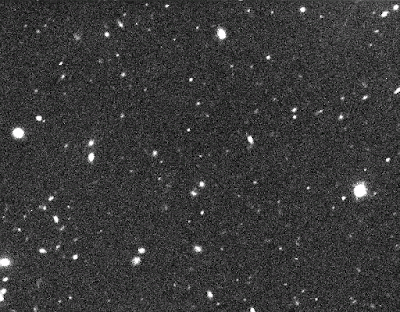During the 2-month period September through October 2018, 3 new comets were discovered and there were 5 comet recoveries. "Current comet magnitudes" & "Daily updated asteroid flybys" pages are available at the top of this blog (or just click on the underline text here). See below for the "Other news" section.
The dates below refer to the date of issuance of CBET (Central Bureau Electronic Telegram) which reported the official news & designations.
- Comet Discoveries
Sep 16 Discovery of C/2018 R3 (LEMMON) (CBET 4556)
Sep 16 Discovery of C/2018 R4 (FULS) (CBET 4557)
Sep 18 Discovery of C/2018 R5 (LEMMON) (CBET 4559)
- Comet Recoveries
Sep 08 Recovery of P/2001 R6 (LINEAR-SKIFF) as P/2018 R1 (CBET 4552)
Sep 16 Recovery of P/2008 O2 (McNAUGHT) as P/2018 P6 (CBET 4554)
Sep 16 Recovery of P/2011 W2 (RINNER) as P/2018 R2 (CBET 4555)
Sep 18 Recovery of P/2007 V1 (LARSON) as P/2018 S1 (CBET 4558)
Oct 06 Recovery of P/2006 D1 (HILL) as P/2018 T1 (CBET 4560)
- Other news
Sep 14 CBET 4553, CBET 4561 (Oct 07), CBET 4562 (Oct 14), CBET 4563 (Oct 18), CBET 4565 (Oct 23), CBET 4566 (Oct 23) & CBET 4567 (Oct 26) report that the following minor planets are binaries systems: (25015) 1998 QN2 & (5402) KEJOSMITH & (18527) 1996 VJ30 & (2178) KAZAKHSTANIA & (100015) 1989 SR7 & (6100) KUNITOMOIKKANSAI & 2018 TF3.
Sep 25 Third most energetic meteor of the year (1.9 kT) was observed, filmed and recorded South of Reunion & Mauritius islands, on September 25, 14h10m UT.
 |
| Image of the September 25, 2018, 14h 10m UT fireball extracted from a Youtube video of the event. |
Oct 02 New Extremely Distant Solar System Object Found During Hunt for PLANET X. The newly found object, called 2015 TG387, was discovered about 80 astronomical units (AU) from the Sun.
 | |||
| 2015 TG387 as it moves across the sky, as seen through the Subaru telescope - Credit: S. Sheppard |
Oct 23 An outburst of October Draconids was widely observed between Oct. 8d17h55m and 9d06h05m UTC (solar longitude 195.146-195.647 degrees, equinox J2000). Visual observations gathered by the International Meteor Organization suggest a peak Zenith Hourly Rate (ZHR) of 122 +/- 5 meteors/hr at 23.6 +/- 0.1 hr UTC on Oct. 8, and a full-width-at-half-maximum (FWHM) duration of 4.0 +/- 0.4 hr. (CBET 4564)
 |
| Composite picture of 2018 Draconid outburst - Credit: Juraj Toth |
by Ernesto Guido
